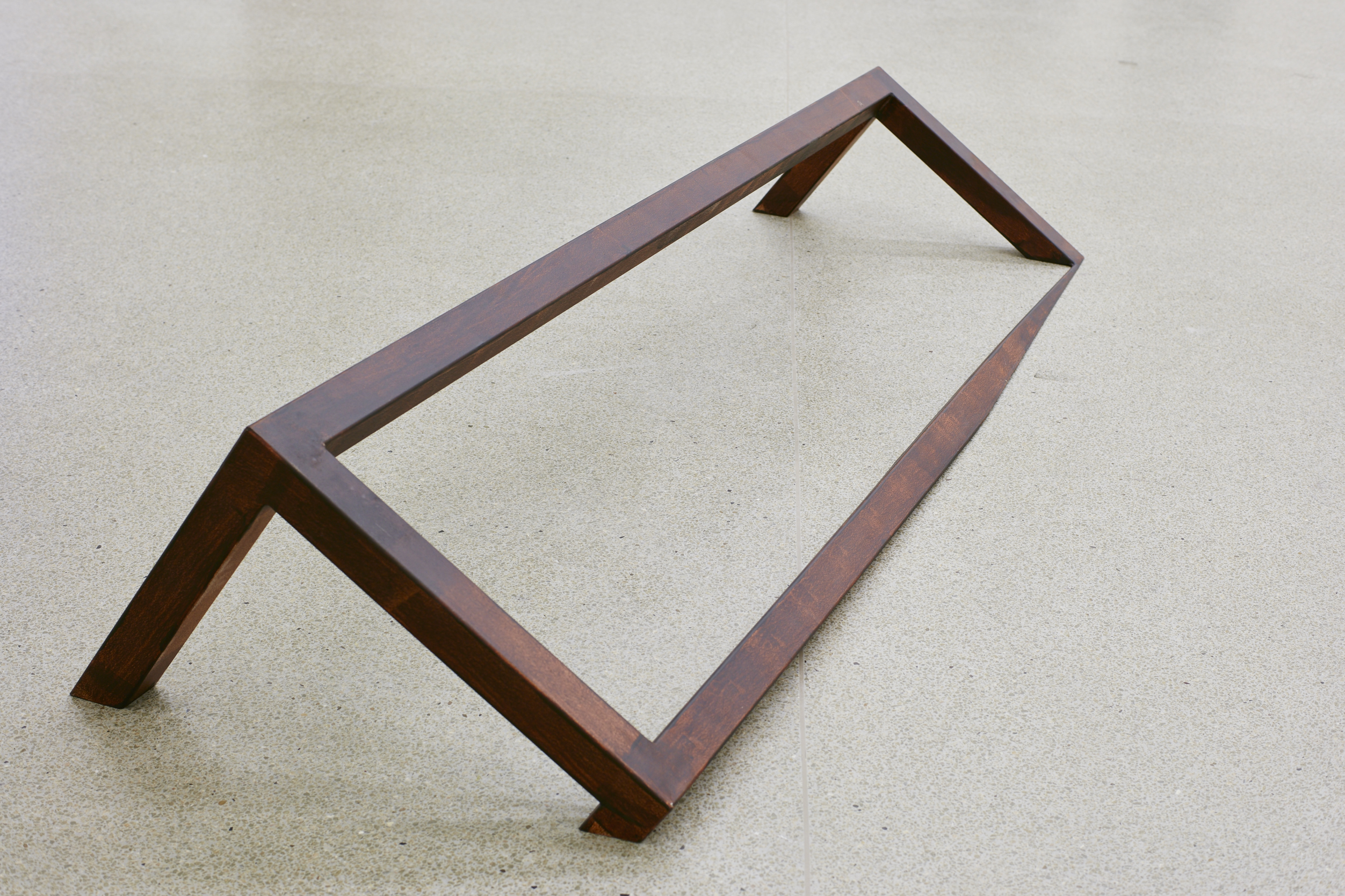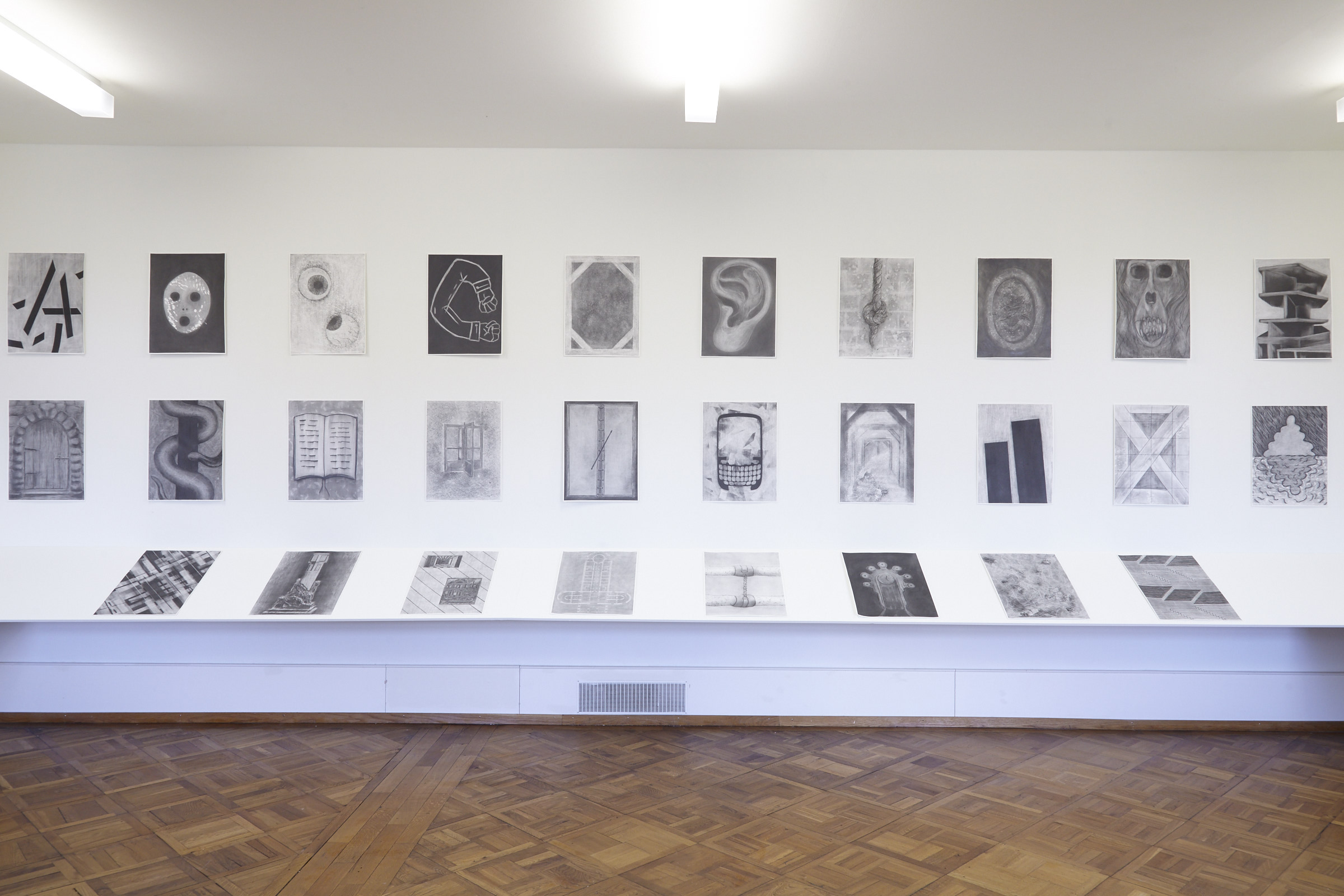Tina Schulz
Exhibition from July 2 till August 28 2016
Curated by Damian Jurt
(e) Tina Schulz (*1975, D) investigates social spaces of action by focusing attention on the field of tension between image and language. Committed to an archaeology of memory, she questions cultural codes, media imagery and architecture and thus aspects of contemporary contexts of life. The drawing series Soft Facts, which has been continued since 2013, forms the reflexive starting point of the exhibition. It is based on images from the internet and suggests a superimposition of internalised ideas and media representations of the world. The motifs are realised with graphite dust, water and graphite chalk - a technique that makes use of the paper's memory capacity. In the colourfulness between stone and skin, a group of paintings refers to architectural fragments and displaced corporeality. A video installation uses a text montage to address the connection between deconstruction and memory and builds a bridge to the site-specific works in the exhibition. Comparable to a walk-in painting, an expansive sculptural installation in the Salle Poma is reminiscent of a timeless ruin, although it refers to the architecture of the exhibition space. Looking at the works, it becomes apparent that Tina Schulz, like an archaeologist, is stripping away the layers of collective memory to allow the fragile moment of an individual narrative to emerge.
(g) Tina Schulz (*1975, D) untersucht gesellschaftliche Handlungsräume, indem sie die Aufmerksamkeit auf das Spannungsfeld zwischen Bild und Sprache richtet. Einer Archäologie des Gedächtnisses verpflichtet, hinterfragt sie kulturelle Codes, mediale Bildwelten und Architektur und damit Aspekte gegenwärtiger Lebenskontexte. Die Zeichnungsserie Soft Facts, die seit 2013 fortgeführt wird, bildet den reflexiven Ausgangspunkt der Ausstellung. Sie basiert auf Bildern aus dem Internet und suggeriert eine Überlagerung von verinnerlichten Vorstellungen sowie medialen Repräsentationen der Welt. Die Umsetzung der Motive erfolgt mit Graphitstaub, Wasser und Graphitkreide – eine Technik, die sich die Speicherfähigkeit des Papiers zu Nutze macht. In der Farbigkeit zwischen Stein und Haut gehalten, bezieht sich eine Gruppe von Gemälden auf Architekturfragmente und verdrängte Körperlichkeit. Eine Videoinstallation thematisiert mit einer Textmontage die Verbindung zwischen Dekonstruktion und Erinnerung und schlägt eine Brücke zu den ortsspezifischen Werken der Ausstellung. Vergleichbar mit einem begehbaren Bild, erinnert eine raumgreifende skulpturale Inszenierung in der Salle Poma an eine zeitlose Ruine, obschon sie sich auf die Architektur des Ausstellungsraumes bezieht. Beim Betrachten der Werke wird ersichtlich, dass Tina Schulz einer Archäologin ähnlich die Schichten der kollektiven Erinnerung abträgt, um den fragilen Moment einer individuellen Erzählung entstehen zu lassen.





